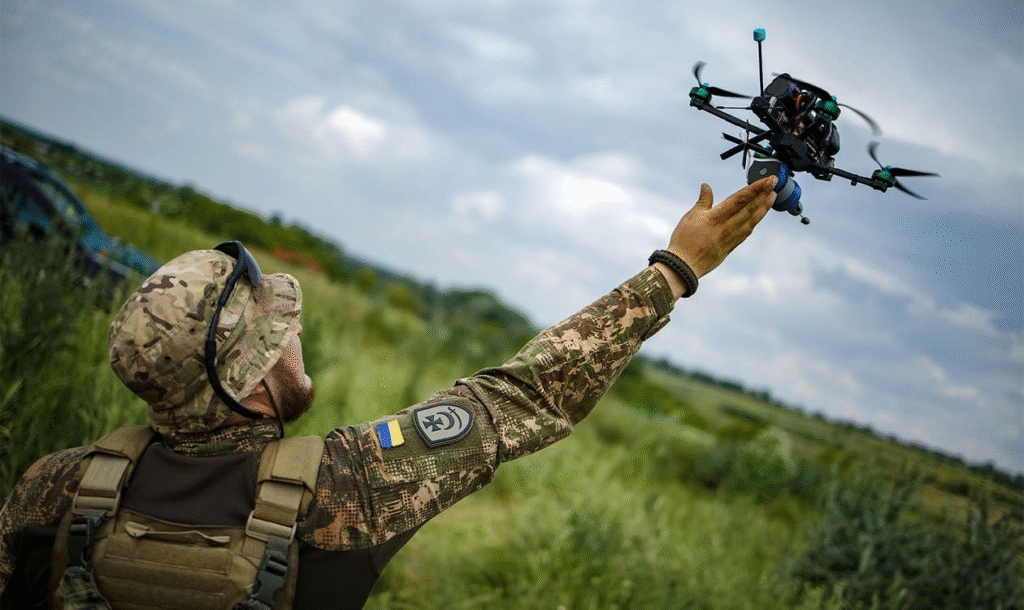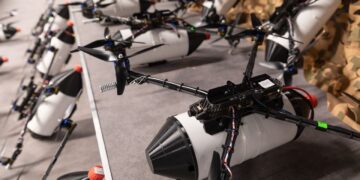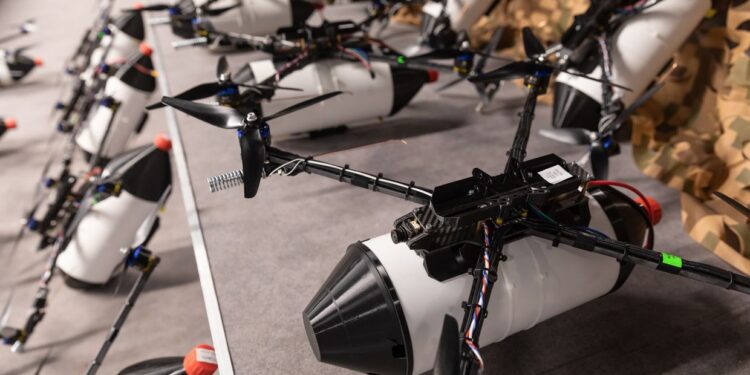FPV drones Ukraine Russia attack: The first-person view drones were reportedly first smuggled to Russia, where they were placed in “mobile wooden houses”. They struck regions nearly 4,000 km from the Ukraine-Russia border.
In a stunning escalation of drone warfare, Ukraine has reportedly deployed First-Person View (FPV) drones to strike targets nearly 4,000 kilometers inside Russian territory. This marks a significant evolution in the ongoing conflict, pushing the boundaries of both range and tactics in the war’s technological theater.
According to recent reports, the FPV drones were initially smuggled into Russia, hidden within “mobile wooden houses” — a creative and covert method of deploying UAVs behind enemy lines. Once positioned within Russian territory, these drones were launched with precision, targeting strategic infrastructure and military facilities deep in the Russian interior.

FPV drones differ from typical long-range drones in that they are manually controlled by operators using real-time video feeds, giving them extreme agility and precision. Traditionally used in short-range reconnaissance or frontline attacks, their application in deep-strike missions within Russia underscores Ukraine’s growing ingenuity and capability in asymmetrical warfare.
The attacks reportedly hit multiple regions, some located almost 4,000 km from the Ukraine-Russia border — a distance that showcases the complexity and premeditation behind the operations. It suggests not only advanced coordination but also potential insider cooperation or sophisticated infiltration techniques.
This marks a troubling development for Russian defense planners. While Moscow has invested heavily in surface-to-air missile systems and electronic warfare, the use of smuggled drones launched from within the country’s own borders represents a threat far more difficult to detect and neutralize. By bypassing external defenses entirely, Ukraine’s drone units are rewriting the rules of long-range engagement.

The psychological impact of these strikes is also notable. Civilian and military targets far removed from the conflict zones are now within reach of attack. Russian citizens and infrastructure that were previously considered safe are facing a new reality, where unmanned threats can appear without warning from within their own territory.
Military analysts believe this tactic aligns with Ukraine’s broader objective to disrupt Russian supply lines, logistics hubs, and morale. By striking deep, Ukraine can force Russia to divert significant resources to homeland defense, thereby stretching its military across a broader front.
International observers are closely watching this development, as it may set a precedent for future conflicts. The ability to conduct long-range drone strikes from within enemy territory without the use of conventional missiles or aircraft is a game-changer in modern warfare.

Despite the tactical success, these strikes raise questions about escalation and proportional response. If verified, Russia may respond with heightened security measures or retaliatory operations, increasing the risk of broader conflict.
As the war continues into its third year, the use of FPV drones smuggled across borders and launched from covert platforms shows how the Ukraine-Russia war has become a proving ground for next-generation tactics. From electronic warfare to AI-guided targeting and now deep-infiltration drone strikes, the conflict is rapidly evolving.
What began as a territorial war has now become a technological arms race, with implications far beyond Eastern Europe. The latest strikes serve as both a warning and a milestone: in today’s battlefield, innovation can be as decisive as firepower.
Read More : At least 34 dead in India’s northeast after heavy floods















 Categories
Categories









